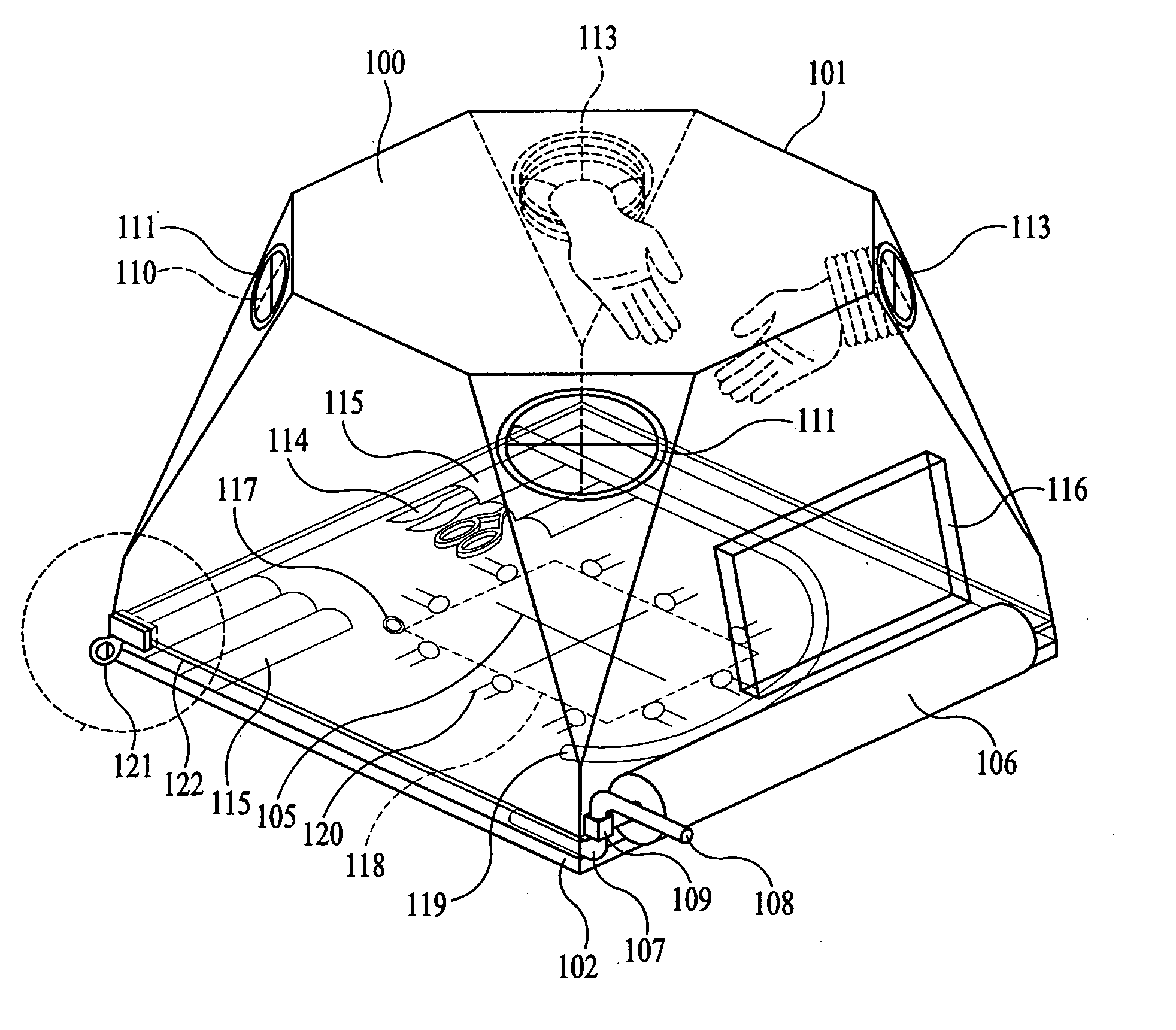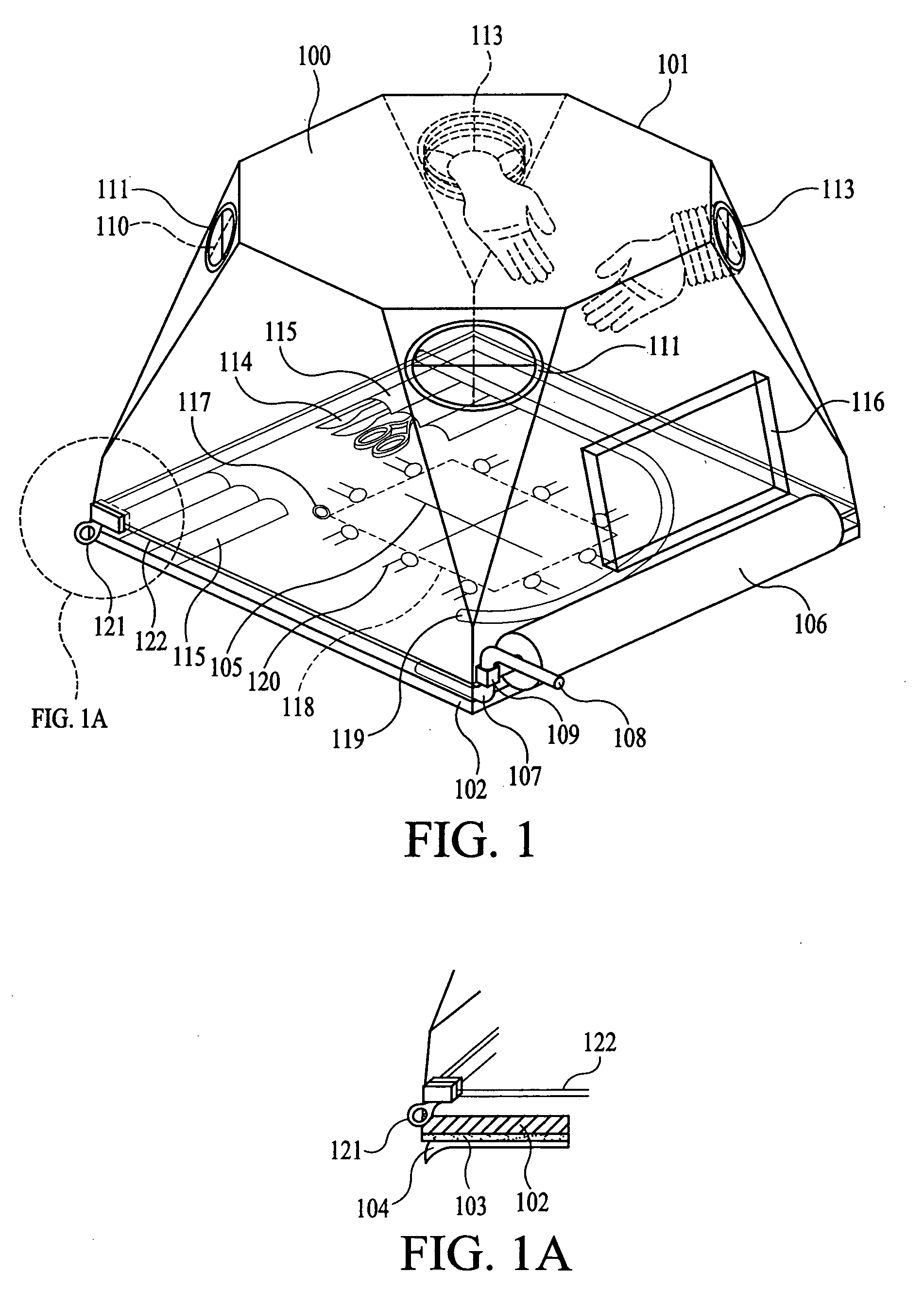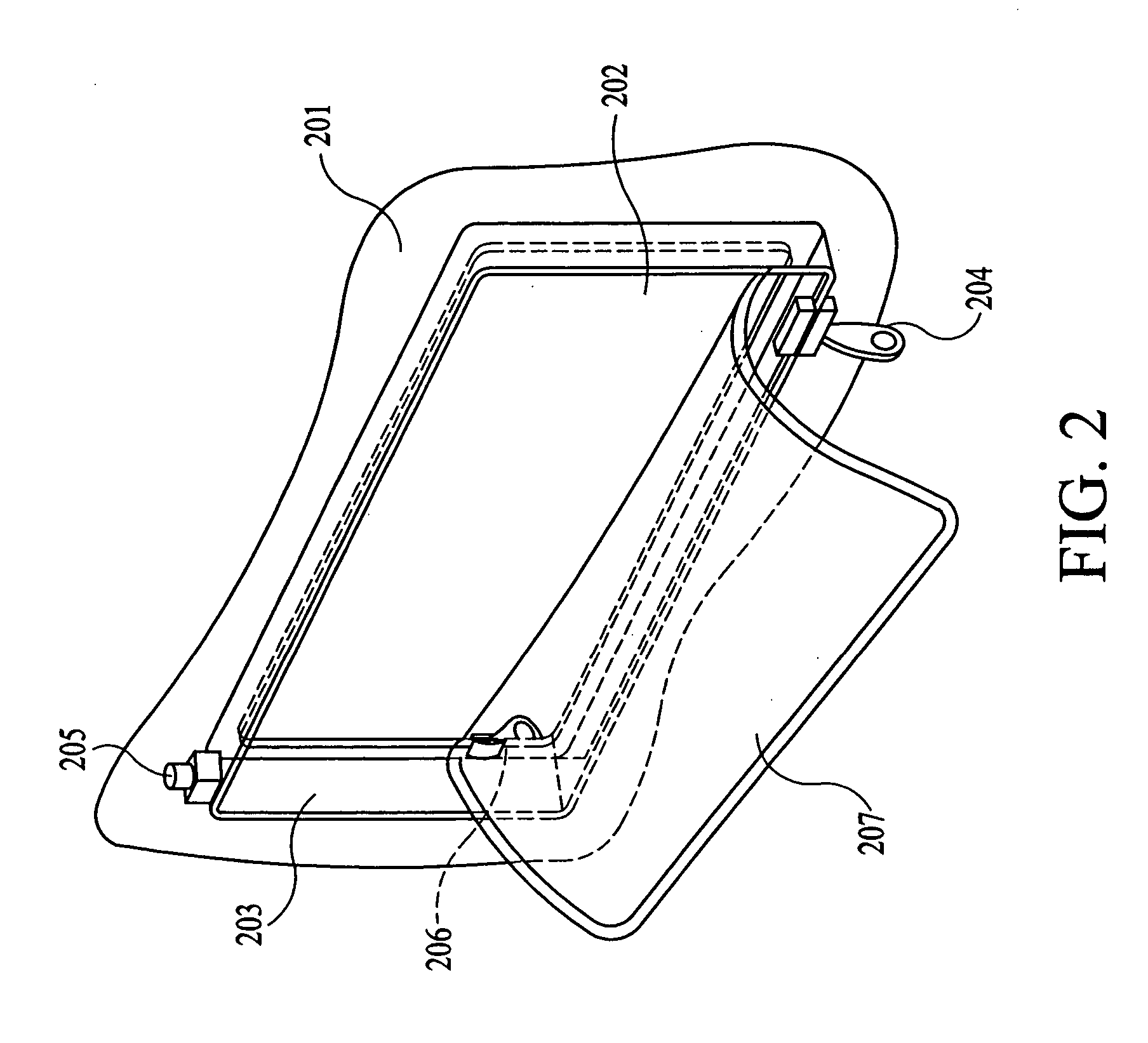Controlled environment device
a technology of controlled environment and environment, which is applied in the field of controlled environment devices, can solve the problems of oxygen toxicity, long-known problems, and largely ignored information regarding oxygen toxicity by physicians for several decades, and achieve the effects of reducing the risk of oxygen toxicity
- Summary
- Abstract
- Description
- Claims
- Application Information
AI Technical Summary
Benefits of technology
Problems solved by technology
Method used
Image
Examples
Embodiment Construction
[0023]The present invention relates to devices and methods for providing controlled environments for surgical procedures, as well as transplantation and wound healing. In particular, one embodiment of the present invention provides devices and methods to provide an anaerobic environment for incision sites. In other embodiments, the present invention provides devices and methods to maintain anaerobic conditions during the collection, transport, and implantation of organs, tissues, cells, and other transplant material. In further embodiments, the present invention provides devices and methods for the production and maintenance of an anaerobic environment surrounding sites of trauma or tissue injury. In particular, the present invention provides devices and methods which allow the operator to strictly control the environment for surgical procedures, transplantation and wound healing, etc. Thus, the present invention also finds use in specialized settings where hyperoxic conditions are ...
PUM
 Login to View More
Login to View More Abstract
Description
Claims
Application Information
 Login to View More
Login to View More - R&D
- Intellectual Property
- Life Sciences
- Materials
- Tech Scout
- Unparalleled Data Quality
- Higher Quality Content
- 60% Fewer Hallucinations
Browse by: Latest US Patents, China's latest patents, Technical Efficacy Thesaurus, Application Domain, Technology Topic, Popular Technical Reports.
© 2025 PatSnap. All rights reserved.Legal|Privacy policy|Modern Slavery Act Transparency Statement|Sitemap|About US| Contact US: help@patsnap.com



